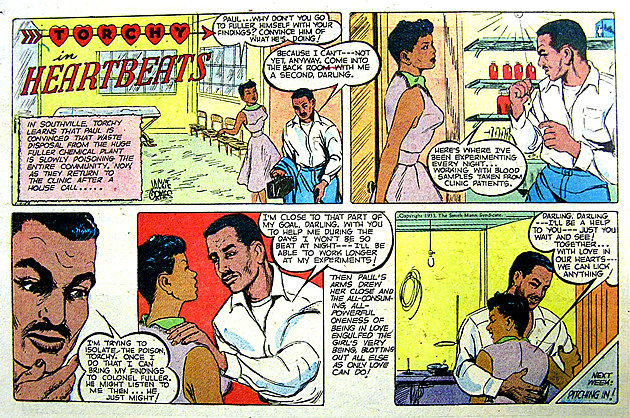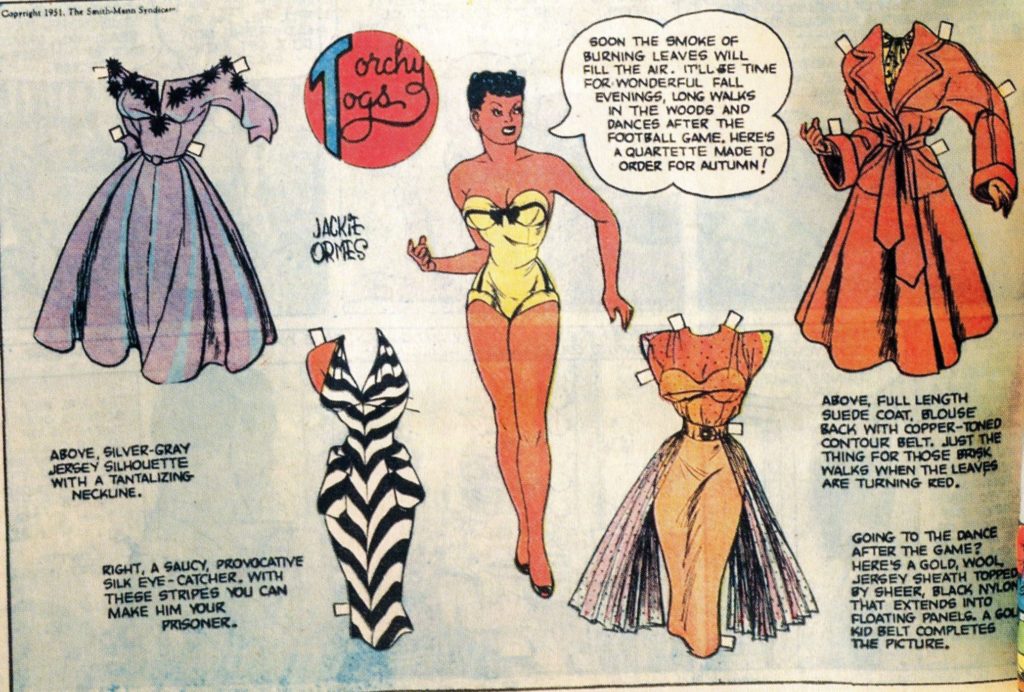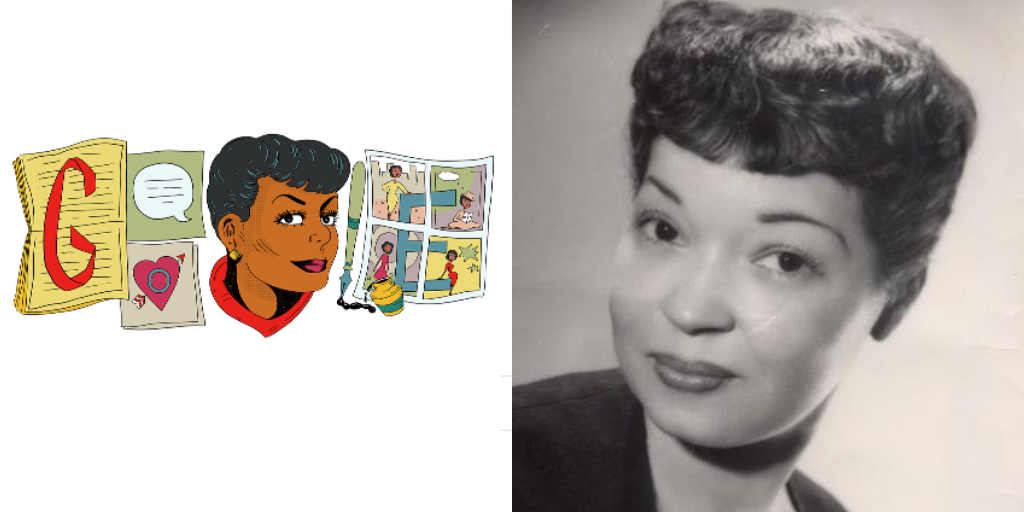“Torchy Brown” creator Jackie Ormes is the subject of the most recent Google Doodle.
I woke up Tuesday to a fantastic surprise–Google chose cartoonist Jackie Ormes as its Google Doodle subject. It just so happens that Ormes is one of the many people I featured in my book, The Book of Awesome Black Americans.
I’ve been a fan of Ormes ever since I discovered her and her comic strips a few years ago. For those not in the know, Ormes is the first mainstream Black American female cartoonists and broke the toy industry’s racial barriers.
Here’s more about Ormes from my book:
Jackie Ormes is America’s first Black cartoonist, creating characters that brought dignity and style back to the image of the African American. She created her comic strips between the 1930s and 1950s, when Black people were still being depicted as pickaninnies and mammies. Thankfully, her comics, particularly her comic about fashionable socialite Torchy Brown, provided Black readers a counterpoint towards all of the horrible imagery they were receiving about themselves. Ormes is also a dollmaker, turning one of her characters Patty-Jo into a doll in the late 1940s. What Ormes did with Patty-Jo was feat during a time when the majority of dolls on the market were White and the ones that were Black were seen as ugly. Ormes’ career in general was a boon for those growing up who wanted to see themselves living the glamorous life.
There’s so much to love about Ormes. First, she made it a point to showcase Blackness, particularly Black femininity, in its humanity. Ormes is one of the few creators who uplifted Black women and showed them as glamorous, desirable, fashionable people despite the media’s focus on dehumanizing Blackness.


But even more impressive than her artwork is that she created the Patty-Jo doll in 1947, a groundbreaking doll for the time. While Barbie gets credit for empowering young girls, the Patty-Jo doll encouraged Black girls to love themselves 12 years before Barbie was invented in 1959.
The Patty-Jo doll is crucial when discussing Black images in the media, particularly when it comes to how toys and popular culture can reinforce children’s perceptions of themselves. When the Patty-Jo doll was on shelves, a husband and wife psychology team interviewed Black children about their self-esteem with their famous doll tests.
To go back to my book:
There was a time when it was hard for many Black Americans to come to terms with their identity. I think the best example of that for me are the “doll tests” psychologists Drs. Kenneth and Mamie Clark conducted in the 1940s. Black children were given four dolls that were identical except in terms of their skin color. The Clarks found that most of the Black children preferred the White doll, associating with positive attributes, while the Black doll was associated with negative attributes and even ugliness. The children’s reactions to the dolls reflected their own image about themselves, which was taught to them by society at large. The Clarks determined that “prejudice, discrimination, and segregation” created feelings of inferiority and low self-esteem among Black children. Self-esteem was so bad among one child in Arkansas that he called that he said of the brown doll he was pointing to, “That’s a nigger. I’m a nigger.” Or, among some children in Massachusetts, Kenneth noted, they “would refuse to answer the question or…would cry and run out of the room.”
This story might be about children, but it also ties into their perception of their own beauty. Self-esteem is more than just believing you can accomplish something; it’s also about seeing yourself as aesthetically pleasing. It’s clear many of these children had already internalized negative images of themselves, not only by how they described the Black dolls, but also by how they described the White dolls. Part of that negative image has to include beauty, because if you see someone else as more likable, accepted and as an aspirational figure, you would also see them as more beautiful.
Unfortunately, a bias towards lighter skin still exists, if a 2010 CNN-commissioned study developed by University of Chicago professor Margaret Beale Spencer is anything to go by. So it’s not as if we’re out of the woods yet. However, I still feel that we have come some distance from where we started—for instance, Black dolls weren’t even being produced at the time of the Clarks’ original tests, so they had to paint a White doll brown for the experiments. Also, the tests helped influence the outcome of Brown vs. The Board of Education of Topeka, Kansas. So there has been some movement towards progress.
As you can see, Ormes was able to punch a dent into white supremacy through her art. She empowered a generation of Black girls and women by showing them as confident, vibrant, and capable. Now that Google has highlighted her to the masses, I hope a new generation can become inspired by her work.
To buy your copy of The Book of Awesome Black Americans and leave a review, click here.
